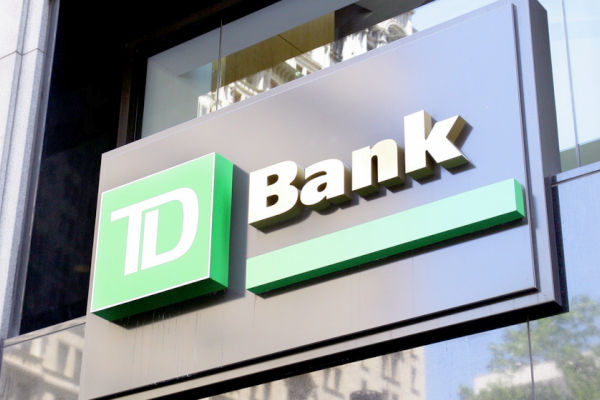The Canadian banking industry has always been unique and remains so even as the global banking landscape is massively disrupted by digital technology, new market entrants and wide-reaching regulation.
The Canadian financial services industry is dominated by the “Big-5” government-chartered banks, which are actually multinational conglomerates servicing all financial sectors.
For seven consecutive years, the World Economic Forum has ranked the Canadian Banking System the world’s strongest.
Unlike the European market, where banks are facing regulatory pressure to adapt and expand, Canada is unlikely to face such catalysts. The market is expected to continue consistent and conservative growth, balanced across the Big-5.
Fin-techs, which are starting to take some market share in other markets, particularly in EMEA. In Canada, they are being kept on the sidelines and currently pose no substantial threat. In many ways, the Canadian market has earned the reputation of being “disruption proof” – but is it? Or is it market inertia?
Even if Canadian banks are not facing regulatory pressure or an influx of competition, they still understand the role that digital is playing in transforming today’s banking landscape. Canadian banks have been focused on transformation, albeit not in the same way as their US-based or European counterparts.
Whereas many banks have placed a premium on developing proprietary products and services to stave off and compete directly with fin-techs, Canadian banks have taken a different approach for traditional incumbents in other markets, embracing partnership and shared innovation. They are working with these firms to adapt existing technology in their own business. For example, Moven’s money management via TD MySpend, Borrowell one-clicking lending via CIBC or Kabbage quick business loans through Scotiabank.
In addition, Canadian banks are establishing innovation centres and participating in shared innovation hubs, which include strong collaboration with Fintechs and other banks. Canadian banks are also hiring more digital talent, appointing transformation leads and establishing internal digital “studios”.
Let’s look at three that are leading the way:
- TD: Toronto-Dominion Bank has opened three innovation hubs, including one in partnership with Communitech. It has brought some 2,000 people into its technology group last year, with three quarters having niche technology skills, said Jeff Henderson, chief information officer. TD plans to add another 1,000 in 2017, including data scientists and artificial intelligence experts. Notably at least 65 per cent will come from places other than a bank.
- CIBC: CIBC won an inaugural award for digital transformation, a type of award that is novel for Canada, and a signal of changing times, so how did they get there? In 2014, CIBC decided to reposition as a digital transformation leader. At that time digital was a service channel and digital sales were only 2% of revenue. Now it has appointed Aayaz Pira to lead digital transformation, grown its digital team from 50 to 250, and leads in benchmarks of online functionality. In June 2016, they launched CIBC Live Labs at MaRS corporate innovation district to develop tools like Hello Home mortgage app. CIBC migrated legacy systems to a service-oriented architecture that delivers IT functions as services via APIs. The Mobile Quick Release team turns around digital products in 60 days, which has helped establish them as a consistent leader in both mobile and online banking functionality in Forrester’s latest benchmark.
- Scotiabank: “Get out of the Bay Street bubble,” challenged Brian Porter CEO. Scotiabank has done just that with Digital Factories or hubs for innovation, research and training, producing digital products and services for the bank’s 23 million customers in Canada and LatAm. Within these, the bank is actively partnering with fintech firms to define new approach and ideas for customer engagement.
Other examples of bank transformation are the quiet migration from branded software to open source to avoid licensing fees that can reach hundreds of millions of dollars a year. The banks are also slowly migrating operations to the cloud, investing in data lakes, adopting dev ops approaches—these initiatives do have implications for automation and job reduction.
Canadians may be ‘stuck’ with the big-5 banks, but the online capabilities score reasonably well, averaging 70 out of 100, slightly ahead of the 67 out of 100 for banks below the border according to Forrester’s 2017 mobile banking benchmark reports, with easy ways to move money and make payments from a smartphone, with Interac making that easier than in the U.S.
Though Canadian banks could improve in-app help based on a customer’s context and enable easier searching across the app. So, if the experience is comfy enough and there aren’t viable alternatives, things may continue at this slow pace.
And so we see that it is the thinking that is revolutionary, the strategy that is reimagined. These banks have demonstrated how it can be far more efficient and cost-effective to take a proven solution and add it to the ecosystem than to reinvent from within. Its transformation, transformed.
What could change that? Perhaps market demand. The greatest wealth transfer in Canadian history is underway with an estimated $750B transferring to boomers over the next decade, with some skipping straight to even younger investors.
With that change, it’ll be interesting to see whether digital wealth management capabilities from the banks will satisfy those new investors.
That may be the catalyst for change — Canadians themselves.









